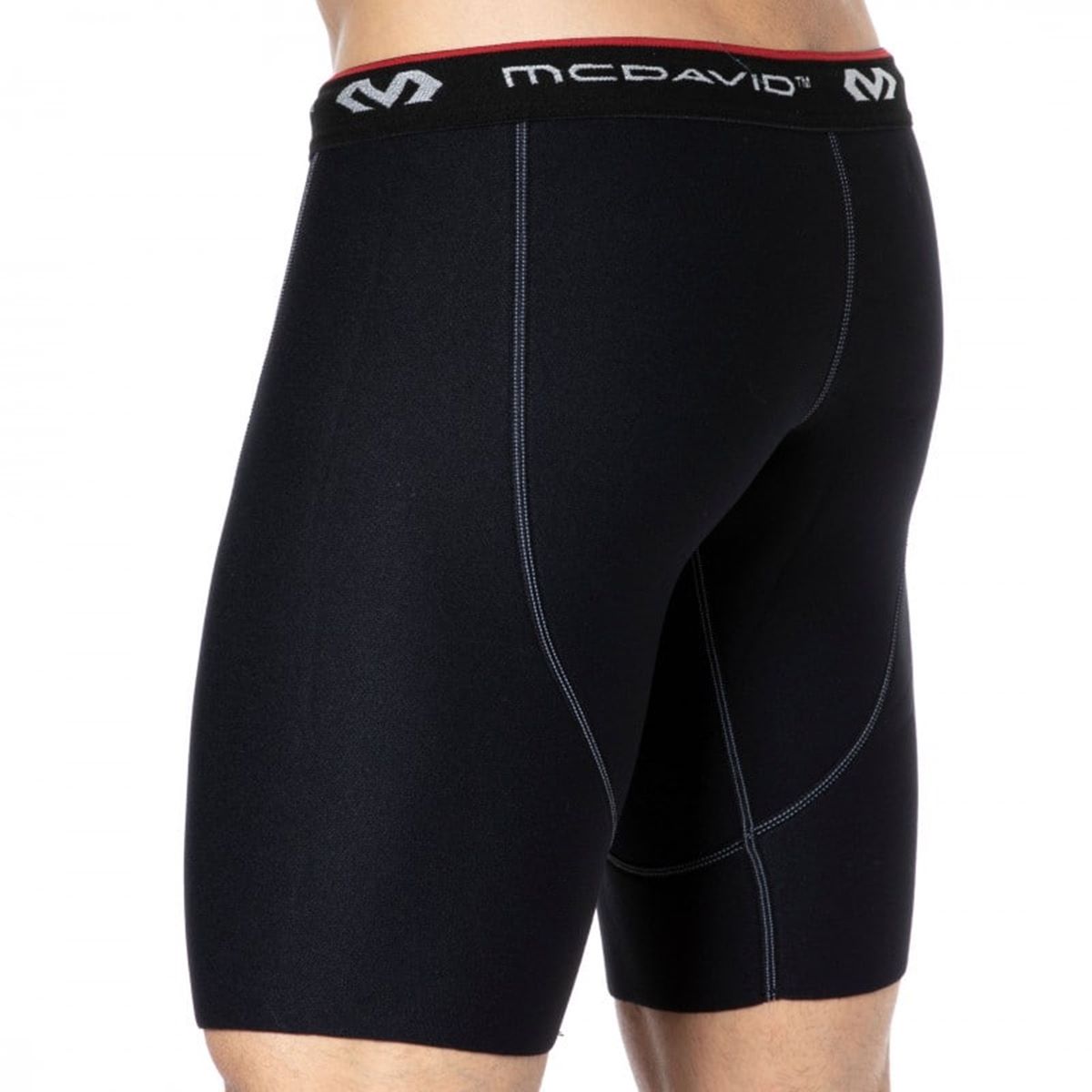

Featured
What Type Of Workout Burns The Most Fat
Modified: August 21, 2023
Discover the ultimate fat-burning workouts featured by fitness experts. Unleash your potential and achieve your weight loss goals with these effective exercises.
Introduction
Welcome to the world of fitness and fat burning! Many individuals strive to shed excess fat and achieve a leaner, healthier physique. But with so many workout options available, it can be confusing to determine which type of workout is the most effective for burning fat.
Understanding the concept of fat burning is crucial. When we engage in physical activity, our body primarily draws energy from two main sources: carbohydrates and fat. While carbohydrates provide quick and easily accessible energy, the body turns to fat stores for sustained energy during longer workouts.
However, not all workouts are created equal when it comes to maximizing fat burning potential. Several factors can influence the rate at which we burn fat during exercise, such as the intensity and duration of the workout, our individual metabolism, and our overall fitness levels.
In this article, we will explore various types of workouts that are known for their fat burning capabilities. From high-intensity interval training (HIIT) to cardiovascular exercises and resistance training, we’ll cover the pros and cons of each approach and help you understand which workout types yield the best results.
Whether you’re a fitness enthusiast looking to take your fat burning to the next level or a beginner starting your fitness journey, this article will provide valuable insights and guidance on the most effective workouts for fat burning. So, let’s dive in and discover which workouts can help you achieve your fitness goals!
Understanding Fat Burning
Before delving into the different types of workouts that burn the most fat, it’s important to have a clear understanding of how fat burning occurs in the body.
When we talk about fat burning, it’s essential to distinguish between burning calories and burning fat. While both concepts are interconnected, burning fat specifically refers to the process of utilizing stored fat as fuel during exercise.
During physical activity, our body relies on energy from various sources. Initially, it taps into readily available glucose in the bloodstream and glycogen stores in the muscles. However, as the intensity and duration of the workout increase, the body begins to break down triglycerides stored in fat cells to release fatty acids and use them for energy.
It’s worth noting that the body doesn’t exclusively burn fat as fuel during exercise. It’s a combination of fat and carbohydrates, with the percentage of each varying depending on several factors such as exercise intensity, duration, and individual metabolism.
Furthermore, fat burning doesn’t solely occur during exercise. Even at rest, our body continuously burns a mix of fat and carbohydrates to meet energy demands. However, engaging in physical activity increases the rate at which we burn calories and fat, ultimately contributing to fat loss and improved overall body composition.
Another crucial aspect to consider is that spot reduction, targeting fat loss in specific areas of the body, is a myth. Contrary to popular belief, doing countless abdominal exercises won’t miraculously burn belly fat. Instead, fat loss occurs throughout the body in a more generalized manner as a result of calorie deficit – when you burn more calories than you consume.
It’s important to approach fat burning with a holistic mindset, focusing not only on exercise but also on maintaining a healthy and balanced diet. Combining regular exercise with proper nutrition ensures an optimal environment for fat burning and overall wellness.
Now that we’ve covered the basics of fat burning, let’s move on to exploring the factors that influence fat burning capacity and the different types of workouts that can maximize fat loss in the body.
Factors Affecting Fat Burning
When it comes to fat burning, several factors can influence the rate at which our body burns fat during exercise. Understanding these factors can help us optimize our workouts for maximum fat burning potential. Let’s explore some key factors below:
- Exercise Intensity: The intensity of your workout plays a crucial role in fat burning. Higher-intensity exercises, such as high-intensity interval training (HIIT), have been shown to be more effective at burning fat compared to low-intensity steady-state cardio. This is because high-intensity workouts increase the body’s oxygen consumption, creating an oxygen debt that stimulates fat breakdown.
- Duration of Exercise: The duration of your workout also affects fat burning. While short, intense workouts can be effective, longer, moderate-intensity workouts can tap into fat stores as an energy source. For more significant fat burning, aim for at least 30 minutes of continuous exercise.
- Metabolism: Metabolism plays a significant role in determining how efficiently your body burns fat. The higher your metabolic rate, the more calories and fat you burn, even at rest. Factors such as genetics, age, and muscle mass influence your metabolism. Regular exercise and strength training can help increase your metabolic rate over time.
- Fitness Level: Your fitness level can impact fat burning as well. As you become more fit, your body becomes more efficient at using fat as fuel during exercise. Don’t worry if you’re a beginner, consistent training will improve your fitness level and enhance your body’s ability to burn fat.
- Caloric Intake and Deficit: To burn fat, you need to be in a caloric deficit, meaning you consume fewer calories than you burn. This deficit forces your body to use stored fat as an energy source. While exercise contributes to this deficit, it’s crucial to maintain a balanced diet and monitor your calorie intake to achieve fat loss.
It’s important to note that these factors work synergistically, and a well-rounded approach is necessary to optimize fat burning. A combination of proper nutrition, regular exercise, and lifestyle modifications can help create an ideal environment for fat loss.
Now that we’ve explored the factors that affect fat burning, let’s dive into specific workout types that are known to be highly effective for maximizing fat loss.
High-Intensity Interval Training (HIIT)
High-Intensity Interval Training (HIIT) has gained significant popularity in recent years due to its effectiveness in burning fat and improving cardiovascular fitness. HIIT involves alternating short bursts of high-intensity exercise with periods of active recovery or rest.
One of the key reasons HIIT is excellent for fat burning is its ability to increase the body’s fat oxidation. During high-intensity intervals, the body rapidly depletes its glycogen stores and turns to stored fat as a primary energy source. This results in significant fat burning during and even after the workout.
In addition to its fat-burning benefits, HIIT also has a positive impact on overall metabolic rate. The intense nature of the workout stimulates the production of growth hormone, which helps build lean muscle mass. More muscle mass translates to a higher resting metabolic rate, meaning your body continues to burn calories and fat even when you’re at rest.
HIIT workouts can be tailored to different fitness levels and preferences. Common forms of HIIT exercises include sprints, cycling, bodyweight exercises, and even circuit training. The key is to alternate between high-intensity intervals and recovery periods, allowing your heart rate to go up and then return to a lower level.
A typical HIIT workout may consist of 20-30 seconds of intense exercise followed by 10-20 seconds of rest or active recovery. This pattern is repeated for several rounds, usually totaling around 20 minutes. The short duration and high intensity make HIIT a convenient option for those with a busy schedule.
Keep in mind that HIIT can be challenging, especially if you’re new to exercise or have certain health conditions. It’s important to start at a moderate intensity and gradually increase the duration and intensity of your intervals as you become more comfortable. Listening to your body and adjusting the workout to suit your needs is essential for long-term success.
Incorporating HIIT workouts into your fitness routine can help maximize fat burning, boost metabolism, and improve cardiovascular health. However, it’s important to remember that consistency is key. Aim to include HIIT sessions 2-3 times a week to reap the benefits and see noticeable changes in your body composition.
Now that we’ve covered HIIT, let’s move on to exploring another effective fat-burning workout method – cardiovascular exercises.
Cardiovascular Exercises
Cardiovascular exercises, also known as cardio or aerobic exercises, are another effective method for burning fat. These exercises elevate your heart rate and increase oxygen consumption, leading to improved cardiovascular fitness and enhanced fat burning.
When it comes to fat burning, the duration and intensity of the cardiovascular workout play a crucial role. Engaging in moderate-intensity cardiovascular exercises for an extended duration is an effective way to tap into fat stores as an energy source.
Cardio exercises can take various forms, catering to different preferences and fitness levels. Some popular cardiovascular exercises include running, jogging, cycling, swimming, brisk walking, and dancing. The key is to choose an activity that you enjoy and can sustain for a longer duration.
The Fat Burning Zone:
You may have heard of the term “the fat-burning zone” – the heart rate range where the body primarily uses fat as fuel. While it’s true that exercising within this zone utilizes a higher percentage of fat calories, it’s important to note that the overall calorie burn may be lower compared to high-intensity workouts.
For optimal fat burning, it’s recommended to incorporate a mix of low to moderate intensity and high-intensity cardio workouts. This variety challenges your body, helping to improve fitness levels while maximizing fat loss.
Interval training, which combines periods of higher intensity with active recovery or lower intensity, can be a great way to incorporate both intensity levels into your cardiovascular workouts. This method helps to increase calorie burn and fat oxidation, even after the workout has ended.
Consistency is key when it comes to cardiovascular exercises for fat burning. Aim for at least 150 minutes of moderate-intensity cardio or 75 minutes of vigorous-intensity cardio per week, spread across several sessions. Remember to gradually increase the duration and intensity as your fitness level improves.
In addition to burning fat, cardiovascular exercises offer numerous other health benefits, such as improved heart health, increased lung capacity, and stress reduction. They also contribute to overall calorie expenditure, aiding in weight management and weight loss when combined with a balanced diet.
Now that we’ve explored cardiovascular exercises, let’s move on to resistance training – another effective method for burning fat and building lean muscle mass.
Resistance Training
Resistance training, also known as strength or weight training, is a powerful method for burning fat and building lean muscle mass. While cardio exercises primarily focus on the cardiovascular system, resistance training targets the muscles, helping to increase overall strength and improve body composition.
One of the key advantages of resistance training for fat burning is that it helps to increase resting metabolic rate. Unlike cardio exercises, which primarily burn calories during the workout, resistance training builds muscle, which is metabolically active tissue. This means that even at rest, your body burns more calories and fat.
When you perform resistance exercises, you stress the muscles, which leads to micro-tears in the muscle fibers. The body then repairs these tears, leading to muscle growth and increased muscle mass. The more muscle mass you have, the more efficiently your body burns fat.
Resistance training can involve various equipment, such as free weights (dumbbells, barbells), weight machines, resistance bands, or even bodyweight exercises. Compound exercises that target multiple muscle groups, like squats, deadlifts, bench press, and lunges, are particularly effective for fat burning.
It’s important to note that resistance training doesn’t necessarily mean you’ll become bulky or overly muscular. The extent of muscle growth depends on factors like gender, genetics, hormone levels, and training intensity. In fact, resistance training can help create a toned and sculpted physique by reducing body fat and increasing muscle definition.
When designing a resistance training program for fat burning, it’s recommended to include a combination of compound exercises and isolation exercises that target specific muscles. Aim for 2-3 sessions per week, allowing at least one day of rest between sessions for muscle recovery.
Remember to start with a weight that challenges you but is still manageable, focusing on proper form and technique. Gradually increase the resistance as you get stronger to continue challenging your muscles and promoting fat loss.
Combining resistance training with cardiovascular exercises and a balanced diet is a powerful approach for fat burning and improving body composition. The increased muscle mass from resistance training not only contributes to fat burning but also enhances overall strength, stability, and functional fitness.
Now that we’ve covered resistance training, let’s move on to exploring the benefits of combining different workout types for maximum fat burning.
Combination Training
Combination training, as the name suggests, involves combining different workout types or modalities to maximize fat burning and overall fitness. This approach allows you to reap the benefits of both cardiovascular exercises and resistance training, creating a well-rounded and effective fitness routine.
By incorporating both cardio and resistance training into your workouts, you can take advantage of the unique fat-burning properties of each method. Cardio exercises increase calorie expenditure during the workout and help improve cardiovascular fitness, while resistance training builds muscle mass and boosts metabolism.
One common way to implement combination training is by incorporating circuit training into your routine. Circuit training involves performing a series of exercises targeting different muscle groups with little to no rest in between. This type of workout not only challenges your cardiovascular system but also engages your muscles, leading to increased calorie burn and fat loss.
Another approach to combination training is to alternate days or sessions of cardio exercises with resistance training. For example, you could perform cardio exercises (like running or cycling) on one day and focus on resistance training the next day. This allows for recovery and muscle growth while still maintaining a calorie-burning effect.
The key to effective combination training is to tailor the intensity and duration of each workout to suit your goals and fitness level. Be sure to incorporate both cardiovascular exercises and resistance exercises into your routine and adjust the balance based on your preferences and desired outcomes.
Additionally, it’s important to remember that diet plays a crucial role in maximizing fat burning and achieving your fitness goals. Pairing combination training with a well-balanced, calorie-controlled diet will help create the optimal conditions for fat loss.
Ultimately, the goal of combination training is to create a diverse and challenging workout regimen that keeps your body guessing and continuously adapting. By incorporating different workout types, you stimulate different muscle groups, prevent plateaus, and maintain long-term motivation.
Experiment with different combinations, workout schedules, and exercises to find what works best for you. It’s always beneficial to seek guidance from a qualified fitness professional who can provide tailored advice and help you create an effective combination training program.
Now that we’ve explored combination training, let’s summarize the best workouts for fat burning.
Best Workouts for Fat Burning
When it comes to fat burning, certain workouts have proven to be highly effective. Here are some of the best workouts that can help you burn fat and achieve your fitness goals:
- High-Intensity Interval Training (HIIT): HIIT workouts involve short bursts of high-intensity exercise followed by periods of rest. HIIT is excellent for fat burning as it increases fat oxidation, boosts metabolism, and improves cardiovascular fitness.
- Cardiovascular Exercises: Engaging in cardiovascular exercises such as running, cycling, swimming, or brisk walking can help burn calories and tap into fat stores for energy. Remember to balance moderate-intensity with high-intensity workouts for optimal fat burning.
- Resistance Training: Incorporate strength or weight training into your workout routine to build lean muscle mass and increase resting metabolic rate. Resistance training not only burns calories during exercise but also helps with long-term fat loss and body composition improvements.
- Combination Training: Combining different workout types, such as circuit training or alternating cardio and resistance training, can maximize fat burning and overall fitness. This approach challenges your body in various ways, leading to increased calorie burn and muscle development.
Remember, consistency and progressive overload are key when it comes to fat burning. Aim to work out regularly, gradually increase the intensity and duration of your workouts, and maintain a balanced diet to create the necessary calorie deficit for fat loss.
It’s also important to listen to your body and incorporate rest and recovery days into your routine. Pushing yourself too hard without allowing adequate rest can lead to burnout or injuries, hindering your progress.
As always, it’s beneficial to consult with a fitness professional to guide you in creating a customized workout plan tailored to your specific needs and goals.
Now armed with the knowledge of the best workouts for fat burning, you can take the next step towards achieving your fitness aspirations and enjoying a healthier, fitter lifestyle.
Conclusion
Burning fat is a common goal for many individuals seeking to improve their health and fitness. While no single workout can magically melt away fat, incorporating specific types of exercises into your routine can significantly enhance your fat burning potential.
From high-intensity interval training (HIIT) to cardiovascular exercises and resistance training, each workout type offers unique benefits for fat loss. HIIT workouts are efficient at increasing fat oxidation and boosting metabolism. Cardio exercises help tap into fat stores and improve cardiovascular fitness. Resistance training builds lean muscle mass and increases resting metabolic rate.
Combination training, which involves combining different workout types or modalities, is another effective approach to maximize fat burning. Whether it’s circuit training or alternating cardio and resistance training sessions, variety and diversity in your workouts keep your body challenged and promote continuous progress.
Factors such as exercise intensity, duration, metabolism, fitness level, and caloric intake can influence your body’s fat burning capacity. Finding the right balance of workouts, incorporating rest and recovery, and maintaining a well-balanced diet are essential for long-term success in burning fat.
It’s important to remember that fat burning is not just about exercise. It’s a holistic journey that requires a combination of regular physical activity, proper nutrition, and lifestyle modifications. Consistency, perseverance, and patience are key qualities that will help you achieve your fat loss goals and maintain a healthy lifestyle.
So, lace up your shoes, grab your weights, and get ready to sweat and burn that unwanted fat. With a strategic and well-rounded approach, you can transform your body, improve your fitness, and ultimately enjoy the numerous benefits of a leaner, healthier you.









